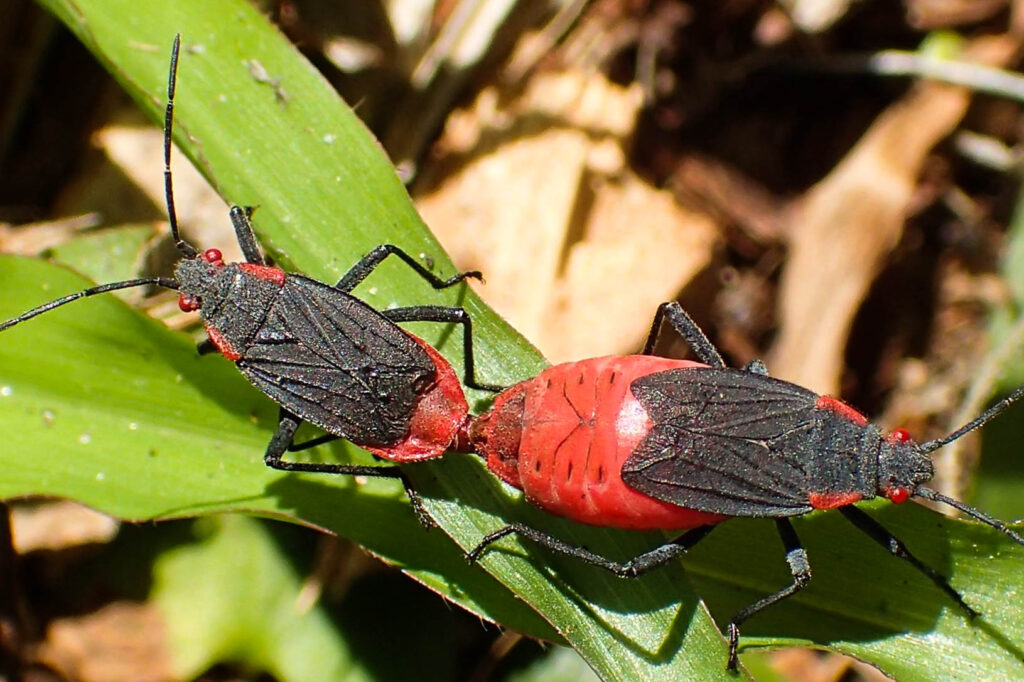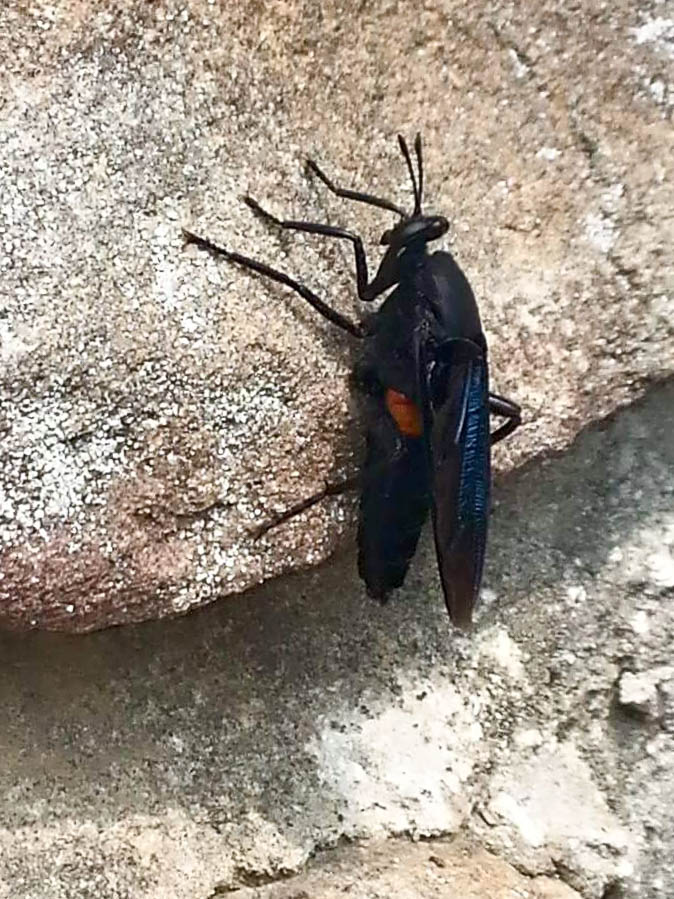About Boxelder Bugs
Overview
Boxelder bugs belong to the order hemiptera of the class insecta, which falls under the phylum arthropoda. The boxelder bug (Boisea trivittata) is a North American bug species that lives on the boxelder, ash, and maple trees. The term ‘trivittata’ is a combination of two Latin words, tri meaning three and ‘vittata,’ meaning banded. You can find the boxelder bug all over eastern Canada to the eastern United States and down to eastern Nevada.
This tiny insect moves in swarms, invading homes during the winter to escape from the harsh weather condition. They come out of hibernation in spring and spend the entire season feeding on their host plant’s leaves, fruit, and seeds.
Appearance
The boxelder bug has a flat, elongated, oval-shaped body with a significantly narrower head. Just like any other insect, the boxelder bug has six legs and three body segments.
The boxelder bug is a hemimetabolous insect, which means that they undergo incomplete metamorphosis. Their entire life cycle happens in three stages; egg, nymph, and adult. A female adult boxelder bug will lay her eggs inside host trees or on their leaves. Boxelder bug eggs are typically oval- shaped with either red-brown or rust-red coloration. This distinct coloration hides the eggs among their host trees, ultimately shielding them from potential predators.

The second stage in the boxelder bug life cycle happens 10 to 14 days after the female lays the eggs. The nymphs are smaller, wingless copies of their parents. They typically live through summer, molting, and growing until they become adults. These adults begin to reproduce during the following spring season.
Behavior
Boxelder bugs are overwintering insects. They travel in swarms, invading homes during fall in a bid to seek a warm place to live throughout winter. Boxelder bugs will travel up to 2 miles in their quest to locate the right place to spend the entire winter period. During their winter hibernation, the boxelder bug will emerge from their resting place if the temperature drops too low. Generally, if the conditions remain favorable, boxelder bugs come out of hibernation during spring and spend the entire season munching on their host trees. Only adult boxelder bugs survive the winter hibernation. Any nymph present will usually die off because they are not able to survive the cold.
Habitat
Boxelder bugs usually seek areas with elevated temperatures. During autumn, they gather on rocks, trees, and buildings to receive direct sunlight. During winter, they swarm and invade buildings and homes to overwinter.
Damages They Cause
Apart from feeding on the leaves, fruits, and seeds of their host trees, boxelder bugs will also munch on the apple tree’s leaves, fruits, and seeds. The boxelder bug does not cause any physical damage to buildings and properties, but their presence is quite irritating.

Although the boxelder bug is not known to bite humans, their piercing mouthpart can penetrate the skin, leaving behind an itchy red spot that resembles a mosquito bite. The boxelder bug will release a strong, offensive odor as a way to ward off potential threats. The fecal matter from the boxelder bug will stain fabrics, and other household items. So, be careful when you are handling them.
Infestation Signs
Boxelder bugs generally swarm public and private buildings during the winter months. The first sign of a boxelder bug infestation is sighting their overwhelming numbers. Like many overwintering insects, they will assemble and invade areas with elevated t emperatures. The other signs include their fecal matter, offensive odor, and buzzing sounds.
How to Get Rid of Them
Since boxelder bugs are not fans of cold places, you can lower your home’s temperature. However, it won’t be easy to use a dehumidifier or air conditioner during the winter period. For exterior treatments, you can spray your surroundings with residual pesticide or sprinkle diatomaceous earth along the perimeter of your house. You can get these items in stores that sell chemicals and other pest control items.
For interior treatments, you can also use a family-friendly insecticide to kill them. Vacuum live bugs and dispose of them properly to avoid their smelly remains. You can also make DIY boxelder bug killing agents using water and dishwashing soap. Dilute a few tablespoons of soap in water and spray the bugs directly to kill them. You can also hire a pest control company to carry out full property fumigation. That way, you can eliminate both those inside and outside your home.
